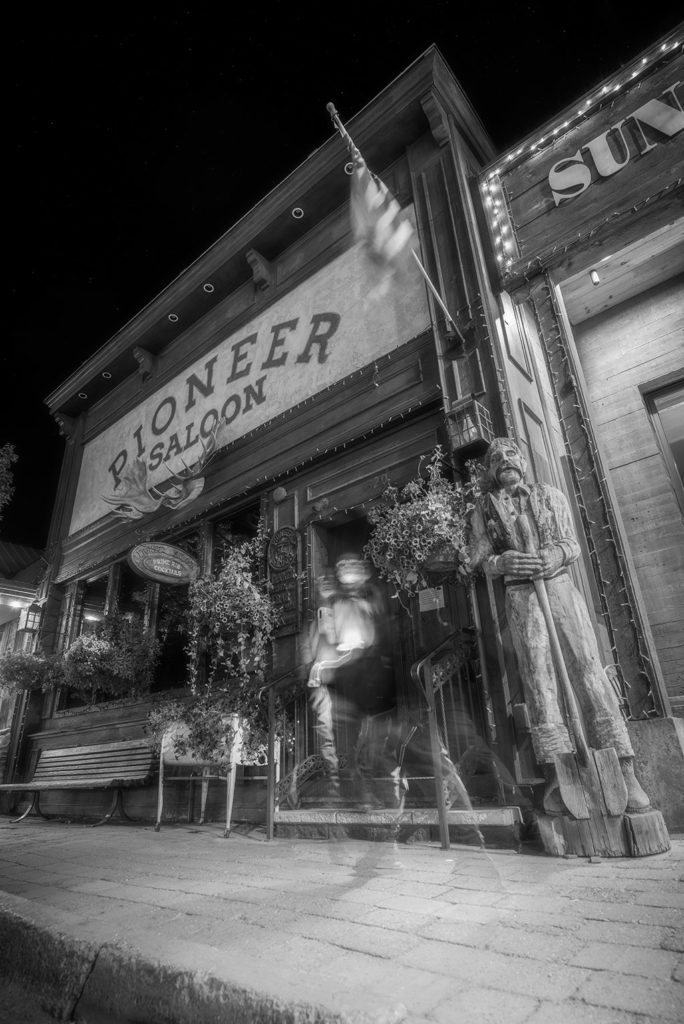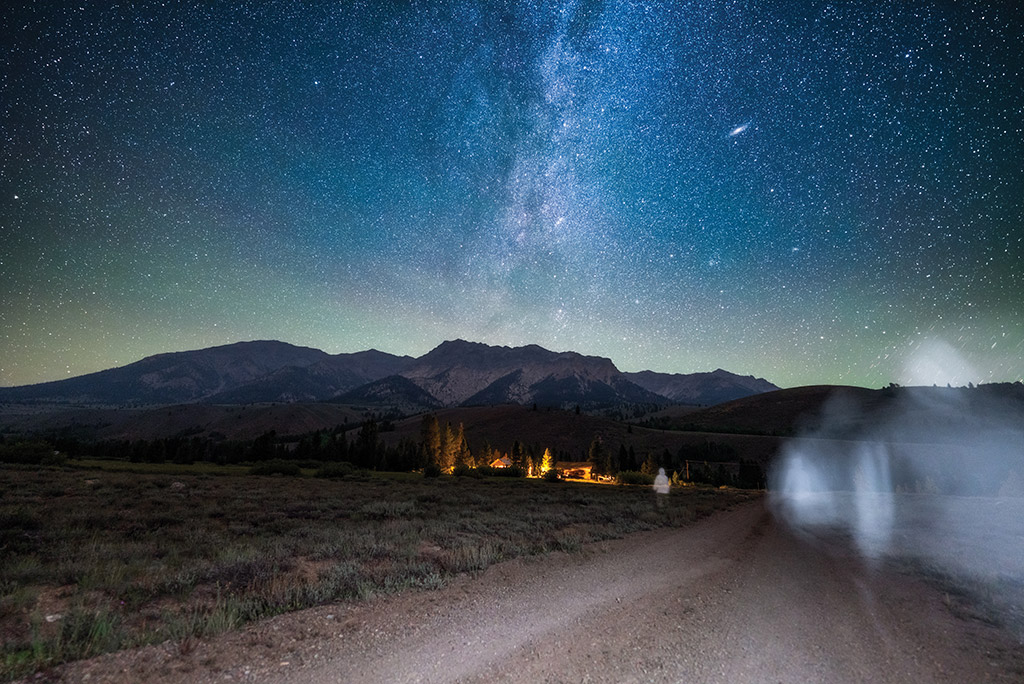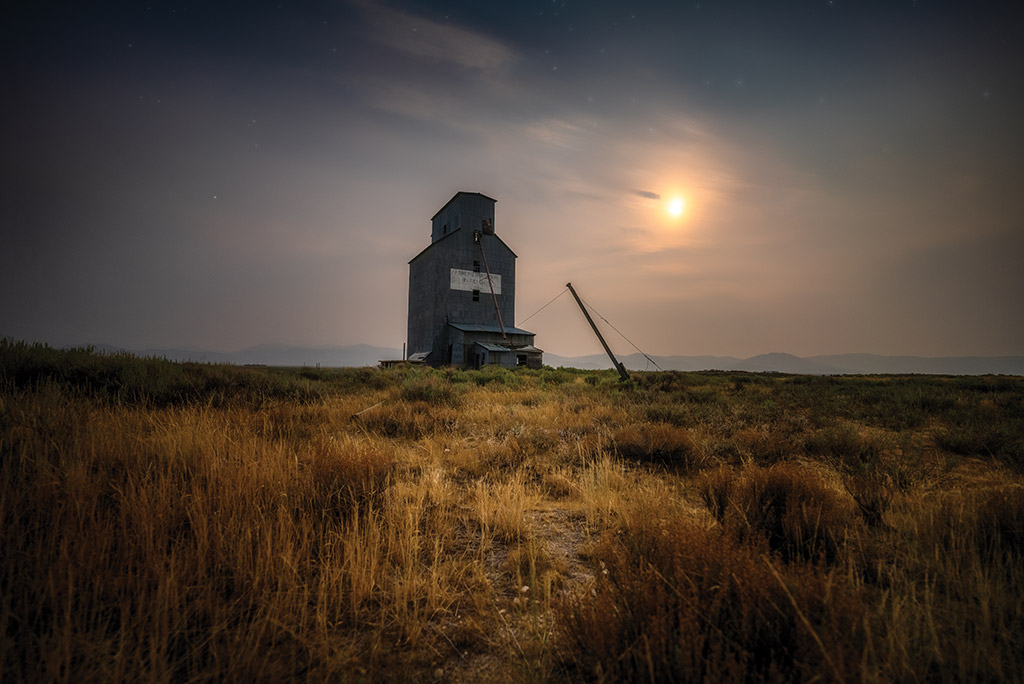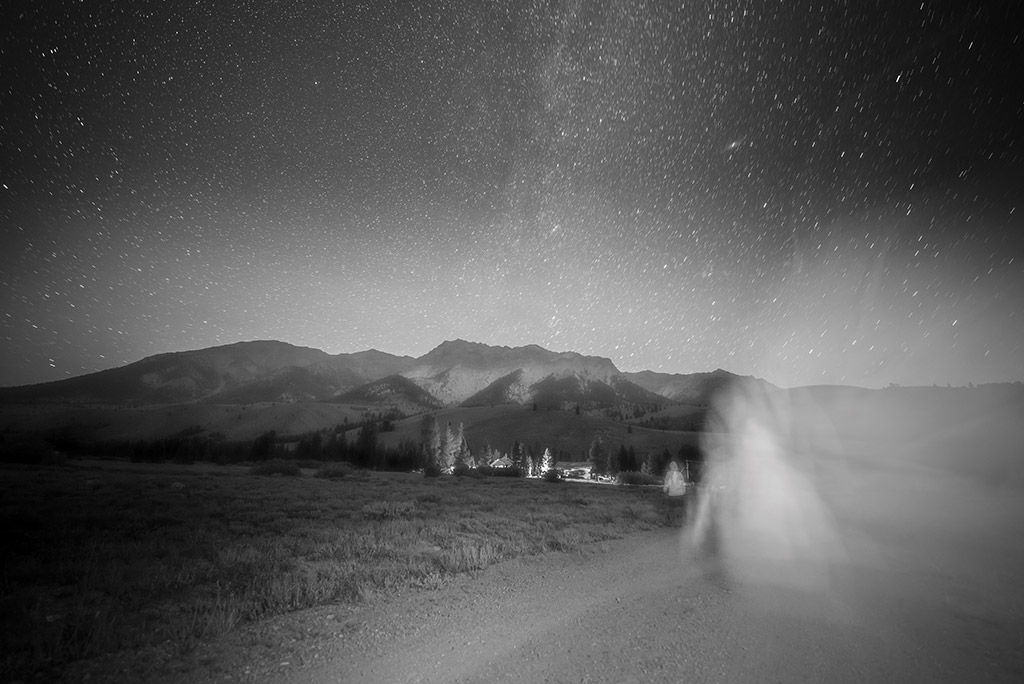The early history of the Wood River Valley and the surrounding region is colorful and well-documented. Native American tribes such as the Bannocks, Sheepeaters and Shoshone inhabited the region as early as 11,500 years ago and were followed much later by European settlers, establishing townsites perhaps as early as the 1840s but certainly by the late 1870s.
Fur trappers were first to penetrate the wilds, followed by miners and finally by the pioneering capitalists who supported these industrial communities, at least until the boom went bust. In fact, the Big Wood River drainage hosted a higher human population during the mining booms of the 1880s and 1890s than it does in the present day.
Many remnants of the early settlers can still be witnessed, if you know where to look. Local ghost towns such as Bullion, Sawtooth City, Vienna, Galena, Custer, Bonanza City, Boulder City and Carrietown—in addition to countless mining claims long forgotten—dot the map across central Idaho, featuring log buildings and dilapidated wood structures that are evidence of a thriving chapter of Idaho’s human history.
A less tangible but potentially very real remnant of those long-gone days are the ghosts of men and women who lived and died in the boom towns surrounding the Sun Valley area, spirits that are reported to haunt local watering holes and ghost towns to this very day.
Ketchum features at least two ghosts of note. Mark Wheaton, former barkeeper and local legend who worked at the Pioneer Saloon for many years, spoke of “the Miner” who would occasionally be seen at or near the 100-year-old building’s bar. This particular ghost, said to be seen primarily when the saloon was empty, featured an outline that indicated an old miner’s garb and presented a cold chill to the surrounding space. Gerard Kelly, manager of the Pioneer Saloon, claims to have had multiple sightings of this spirit—and perhaps a separate one as well.

Witnesses believe the Pioneer Saloon ghost is a miner from Ketchum’s boom town days.
A few blocks to the northeast, the Ketchum Grill is also rumored to house an unknown wandering soul. Located in the historic Ed Williams building built in 1885, the Ketchum Grill is well-known to mountain town epicureans for its world-class cuisine. And in the rear dining room, employees have reported witnessing the image of a male specter who dons a 1940s-era suit and tie complimented with a Fedora-style hat. Interestingly, the ghost is only viewable from the waist up, resulting in the impression that the current floor of the restaurant bisects him at the waistline. As the building was originally built 136 years ago, it is unclear if the structure’s original floor was constructed at a lower elevation.

The ghost who haunts the Ketchum Grill is a man wearing a 1940s-era suit and tie, complimented with a Fedora-style hat.
Approximately 15 miles north of Ketchum, at the base of the Boulder Mountains, rests a quaint U.S. Forest Service cabin replete with geothermal hot springs coursing through the surrounding meadow. This early structure can be viewed from Highway 75 and is known as the Russian John guard station. Though history has recorded little account of the namesake of this encampment, Russian John is storied to be well-ensconced in the nearby Baker Creek and Prairie Creek valleys.
According to local legend, Russian John is said to be a bit of a prankster and has a hankering to rearrange campsites of traveling campers. On many occasions, campers have returned from a day of recreating in the surrounding forest to find their camps moved, altered or disassembled altogether. It has been suggested that on windier days, Russian John’s laughter can be heard echoing off the nearby Boulder Mountains and through the ubiquitous Douglas fir forest.

The Russian John guard station is frequented by the ghost of Russian John himself.
The Camas Prairie, home to the small ranching town of Fairfield, has a significant pioneer history and is the location of the Bannock War of 1878. When the livestock of newly-arrived European settlers began to uproot and devour the Camas bulbs, a staple food source of the Bannocks, the Native Americans waged war on the pioneers, resulting in many casualties. The U.S. Cavalry was called in, and the Bannocks were driven from the region, never to return. It is said that many lives were lost, and some of these deceased souls still wander the prairie at dusk and dawn in search of their fellow tribe members.
To the west of Fairfield, a diminutive creek meanders through alfalfa fields toward its eventual confluence with Camas Creek, a tributary of the Big Wood River. Chimney Creek, as it is known today, has a truly remarkable if not obscure history among local pioneer historians. Upon reaching the western third of the prairie in the 1870s, the “first” European settlers found something astonishing. Spaced evenly along the brook were 12 stone chimneys, obvious remnants of homesteads, yet the log buildings that must once have been present, were long gone, and there was no sign of inhabitants.

This grain tower near Fairfield is witness to the ghosts of early pioneers who walk along nearby Chimney Creek.
It was later suggested by researchers that these truly earliest pioneers must have traveled north out of the Salt Lake City area, perhaps as early as the 1840s, due to diverging religious beliefs. It is believed that the Bannocks burned down all of the homesteads, but what became of the settlers is unknown. According to local legend, images of men, women and children in pioneer-era clothing have been witnessed walking along the creek, only to fade away upon closer inspection.
The Sun Valley area has a rich and robust human history, one that can be witnessed in a myriad of decaying dwellings, eroded mining roads and long-abandoned ghost towns that were once bustling centers of all that the pioneer life had to offer. And though time may have taken its toll on the physical remnants of that era, there are those who attest that spirits of pioneering souls remain, evidenced by fleeting glances, cold chills or laughter on the wind.


